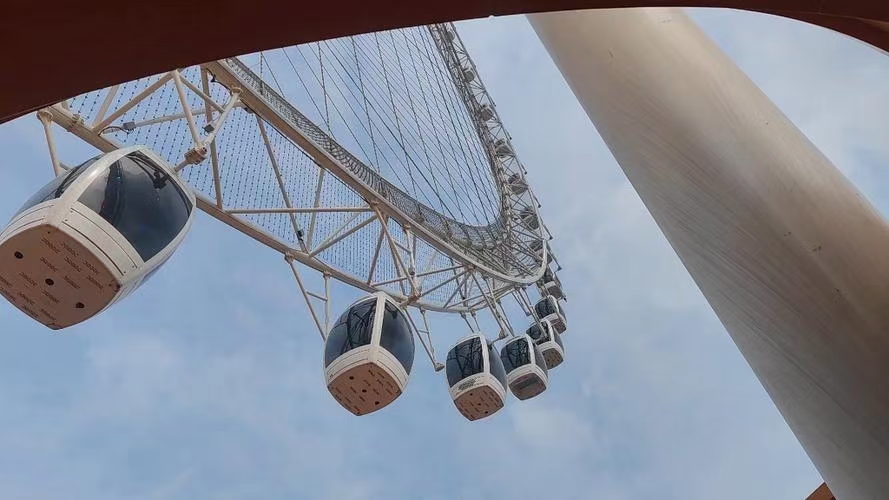- Albanian
- Arabic
- Belarusian
- Bengali
- Czech
- English
- French
- German
- Hebrew
- Hungarian
- Indonesian
- irish
- Italian
- Japanese
- kazakh
- Persian
- Russian
- Thai
- Uzbek
- Vietnamese
The History and Evolution of the First Roller Coaster Ever Created
The Genesis of Thrill The First Roller Coaster
The exhilarating world of amusement parks, with its dizzying rides and heart-pounding experiences, has roots that trace back to the 17th century. Among its most iconic attractions, the roller coaster stands out as a marvel of engineering and entertainment. But have you ever stopped to ponder where it all began? The story of the first roller coaster is not only a tale of innovation but also one of societal change, as it reflects the human desire for thrill and adventure.
The genesis of the roller coaster can be traced back to the “Russian Mountains,” which were essentially ice slides constructed in the 16th century in Russia. These structures were made of wooden ramps covered in ice, where riders would sit on sleds for a thrilling descent. The concept quickly gained popularity, and by the 18th century, these ice slides inspired similar constructions in other parts of Europe. The French took this idea and adapted it into the “Les Montagnes Russes” (Russian Mountains), featuring wooden tracks and carts that glided down gravity-driven slopes, offering riders an exhilarating rush.
The first true roller coaster, as we know it today, emerged in the early 19th century in the United States. In 1884, LaMarcus Adna Thompson, an American inventor, created “The Switchback Railway” in Coney Island, New York. This groundbreaking attraction featured a series of gentle slopes and sharp turns, where riders sat in cars that were supported by wooden tracks. Patrons could purchase a ticket for just five cents, and the ride became an instant sensation. Thompson’s creation, with its modest height and speed, introduced the thrill of the roller coaster to the masses and set the stage for future innovations in ride design.
As the popularity of the roller coaster surged, so too did the demand for bigger and more daring attractions. By the early 1900s, roller coasters began to emerge in amusement parks across the country. The “Flip Flap” coaster, introduced in 1895, took thrill-seeking to new heights, incorporating a vertical loop that offered riders a sensation of weightlessness. This innovation marked a turning point, as loop-the-loops became a staple feature in many subsequent coasters.
the first roller coaster

The design and engineering of roller coasters underwent significant advancements throughout the 20th century. With the introduction of steel tracks in the 1950s, coaster designers could create taller, faster, and more complex rides. The “Steel Phantom,” for example, debuted in 1991 at Kennywood Park and featured a record-breaking height and speed that sent adrenaline soaring. The ability to produce smoother rides and sharper turns with steel track designs revolutionized the roller coaster experience and captivated audiences worldwide.
Today, roller coasters are grand spectacles that draw in millions of visitors each year. They come in various shapes and sizes, from family-friendly rides to extreme thrillers that defy gravity. Innovations like virtual reality technology and intricate theming have transformed the roller coaster experience, making it a multi-sensory adventure. Parks continually strive to outdo themselves, introducing new feats of engineering that challenge the limits of human courage and ingenuity.
But beyond the engineering marvels and breathtaking speeds, roller coasters represent something deeper—the universal desire for thrill, excitement, and escapism. They allow people to break free from the constraints of everyday life, if only for a few moments. The first roller coaster, a humble creation by LaMarcus Adna Thompson, ignited this passion for adventure, paving the way for the exhilarating rides we enjoy today.
In conclusion, the story of the first roller coaster is not just about a single invention, but rather a reflection of human creativity and the enduring pursuit of joy. As riders clamber aboard the latest coasters, they partake in a tradition that dates back centuries, reminding us that the quest for thrill is embedded in our very nature. From ice slides in Russia to cutting-edge steel coasters, the roller coaster continues to evolve, thrilling generations to come.
-
Flume Ride-Hebei Zhipao Amusement Equipment Manufacturing Co., Ltd.|Thrilling Water Attraction&Customizable DesignJul.30,2025
-
Flume Ride - Hebei Zhipao Amusement Equipment | Water Coaster, Thrilling DescentJul.30,2025
-
Flume Ride - Hebei Zhipao | Thrilling Water AttractionJul.30,2025
-
Flume Ride: Thrilling Water Attraction by Hebei Zhipao|Log Flume Manufacturers&Flume Ride DesignJul.30,2025
-
Flume Ride-Hebei Zhipao Amusement Equipment Manufacturing Co., Ltd.|Thrilling Water Coaster, Safe DesignJul.30,2025
-
Flume Ride-Hebei Zhipao Amusement Equipment Manufacturing Co., Ltd.|Thrilling Water Attraction, Safe DesignJul.30,2025
